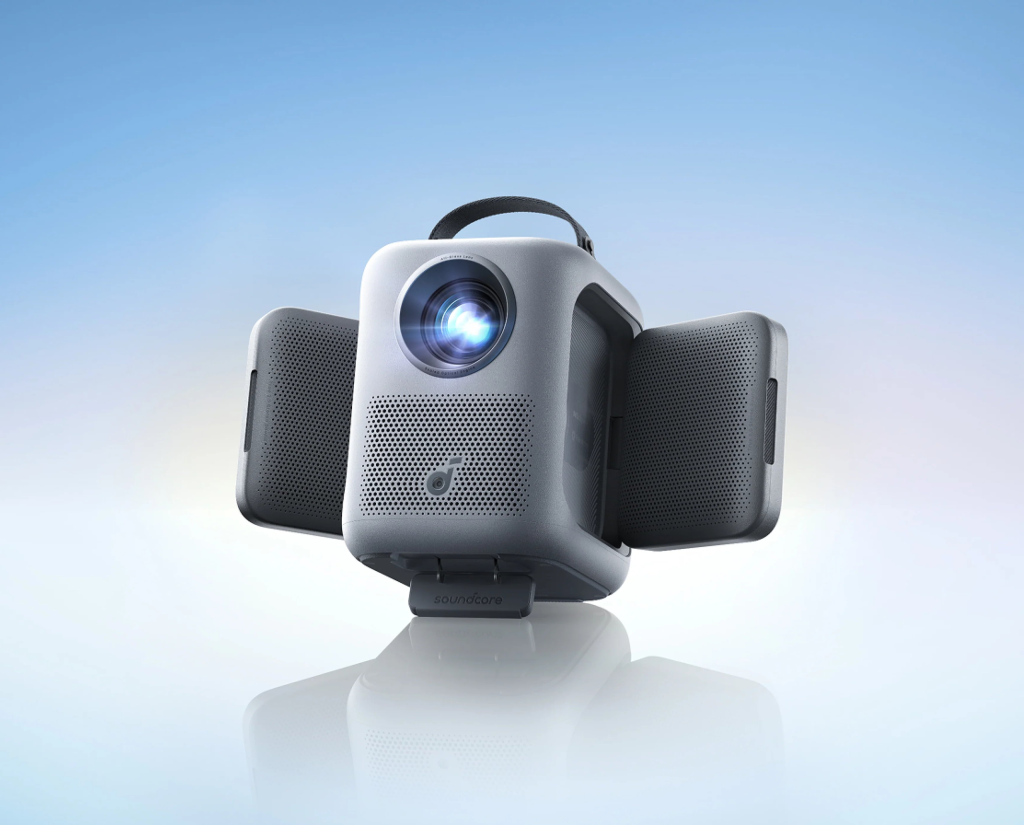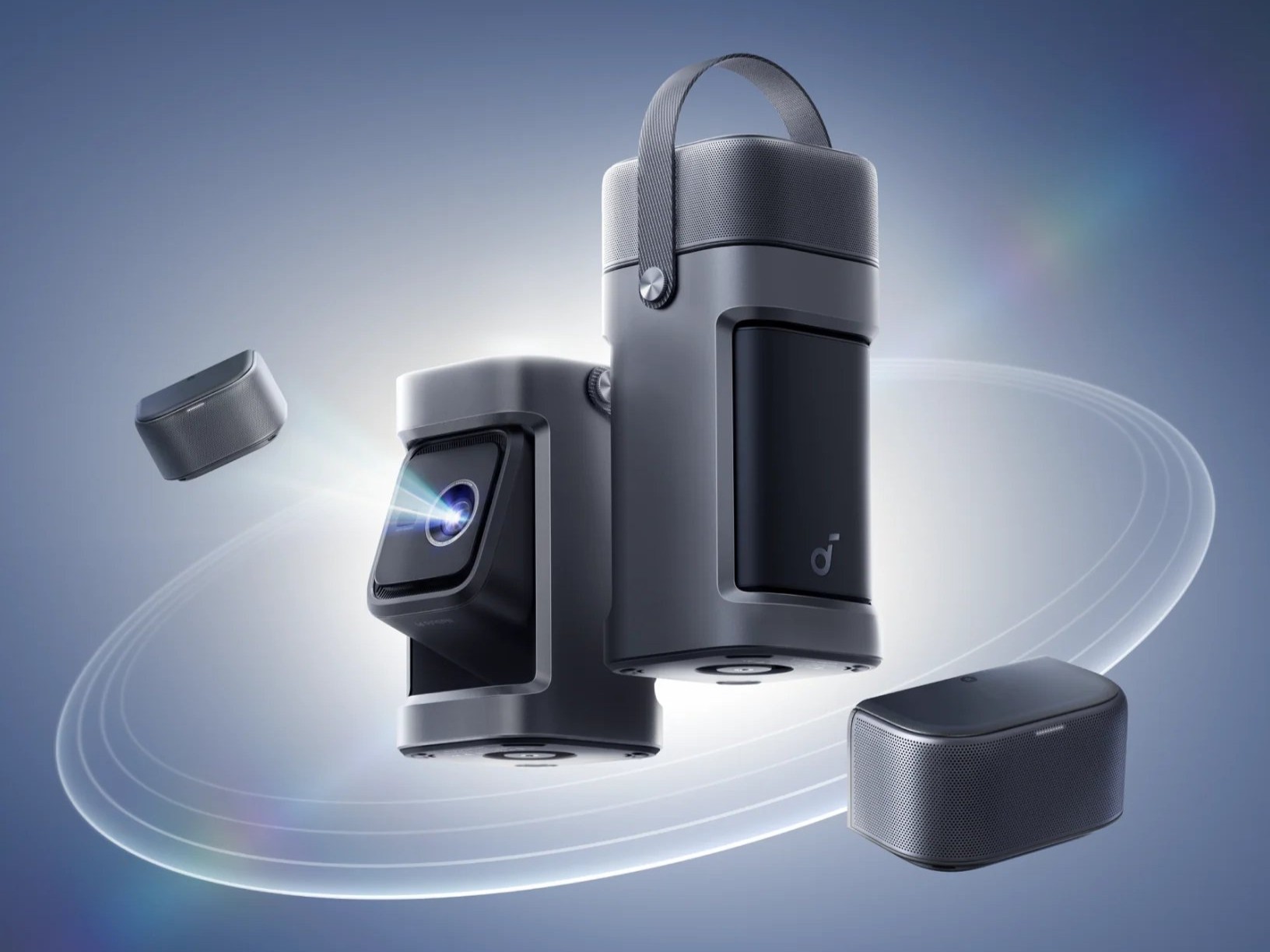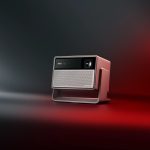We are excited to unveil two new entries in the Nebula line from Anker: the Nebula P1 and the Nebula P1i, portable projectors designed to redefine what mobility and audio flexibility can look like in the projector market. Below is a deep dive into the design, features, comparisons, and what sets them apart from anything before.
Key Highlights: What We Know So Far
| Feature | Nebula P1 | Nebula P1i |
|---|---|---|
| Audio configuration | Detachable speakers — can remove the speakers from the projector body. | Built-in adjustable-angle speakers (remain attached, but angle can be adjusted). |
| Design / Portability | Integrated handle and housing that allows the projector to be tilted within its body. | Built-in stand, so projects from a slight angle; less mechanical tilt inside. |
| Battery / Power | Expected to include a battery similar to the Nebula Mars 3 Air. (Exact capacity not yet disclosed.) | Same expected battery / power approach as the P1. |
| Price & Release | US launch: October 6, 2025. RRP $799.99, early-bird discount at $80 off ($719.99) + free projector screen (worth $169) for mailing-list sign-ups. | Release date in US not yet clarified; European availability and pricing TBD. |

Design & Usability: What Makes P1 & P1i Stand Out
- Detachable or angle-adjustable audio: The P1 offers detachable speakers, which is unusual in portable projectors. Users can remove or rearrange the speakers depending on usage scenario — for example, for more immersive sound or for more compact packing. The P1i, instead, builds in angular flexibility. This audio flexibility is a defining feature.
- Tilt / Stand Mechanism: P1 has a tilt-within-housing mechanism; P1i has built-in stand giving it a natural slight pointing angle. This helps with projection when surfaces (walls, screens) are not located perfectly.
- Portability features: The integrated handle on the P1 enhances portability. For outdoor use or moving between rooms, this is a helpful design. The P1i’s built-in stand makes setup simpler in stable or semi-permanent installations.
What We Don’t Know Yet (and Why It Matters)
Despite some useful reveals, several key specs remain unknown:
- Resolution: Anker has not officially confirmed the native resolution for either model. This matters: 1080p vs 720p vs 4K predictions will strongly affect image clarity.
- Peak brightness / ANSI lumens: Critical for usage in brighter environments. Without this, comparisons to competitors or older Nebula models are necessarily tentative.
- Contrast ratios, color support (HDR, etc.): These impact image depth, color fidelity, shadow detail. Absent from current info.
- Exact battery capacity / playtime: Knowing whether battery life supports long movie watching outdoors, etc., is essential for purchase decisions.
How These Compare with Earlier Nebula Models & Market Rivals
To appreciate what is new, we must benchmark P1 & P1i against existing Nebula devices and other projectors in the same portable class:
- Nebula Mars 3 Air: This prior model is battery-powered, shows that Anker is familiar with this class. The P1/P1i are expected to have similar battery behavior, but P1 adds more audio flexibility.
- Nebula X1 / X1 Pro: The X1 series is higher tier, with 4K triple-laser projection, high lumen outputs, immersive sound systems, etc.The P1/P1i are more modest but potentially aimed at users who want portability plus better audio than standard minis, without the price or size of something like X1 Pro.
- Peers in the portable projector market: Many projectors in this segment emphasize compact size, battery life, basic speakers. The P1’s detachable speakers or the P1i’s adjustable audio offer differentiation. If brightness and resolution are competitive, these models could fill a niche between ultra-compact minis and full home theater projectors.
Anticipated Use-Cases & Ideal Users
Based on what has been revealed, here’s where we think P1 and P1i will excel, and where they may fall short:
| Ideal Use-Cases | Strengths | Potential Limitations |
|---|---|---|
| Outdoor movie nights | Portability, battery power, audio detachability (for better spread) | If peak brightness is low, image washout under ambient or twilight light will be an issue. Also full weather sealing unlikely. |
| Frequent travel / moving between rooms | Lightweight, handles/stand make move-ability easier, intuitive tilt/stand mechanisms | Durability of detachable speakers; power source will matter (battery + how long). |
| Small room entertainment / dorms / bedrooms | Likely sufficient projection size, built-in audio improves over token tiny speakers | If resolution is 720p vs 1080p, large screen may show pixelation; contrast and color may suffer in darker scenes if specs are modest. |
| Desk projection / presentations | Flexibility of angle, built-in speakers reduce need for external gear | Probably not superb for brightness or color in heavily lit conference rooms; latency, connectivity also factors unknown. |
Pricing & Value Proposition
- P1 at ~$799.99 is positioned as a high-end portable projector. With the early discount ($80) plus free screen (~$169), the “package-deal” value improves.
- That pricing suggests Anker believes P1 & P1i are more than novelties; they are trying to enter a premium niche in the portable projection market.
- Whether the value holds depends on the missing specs: resolution, brightness, battery duration, speaker quality. Buyers will weigh whether audio flexibility and build are worth the premium over cheaper minis.


